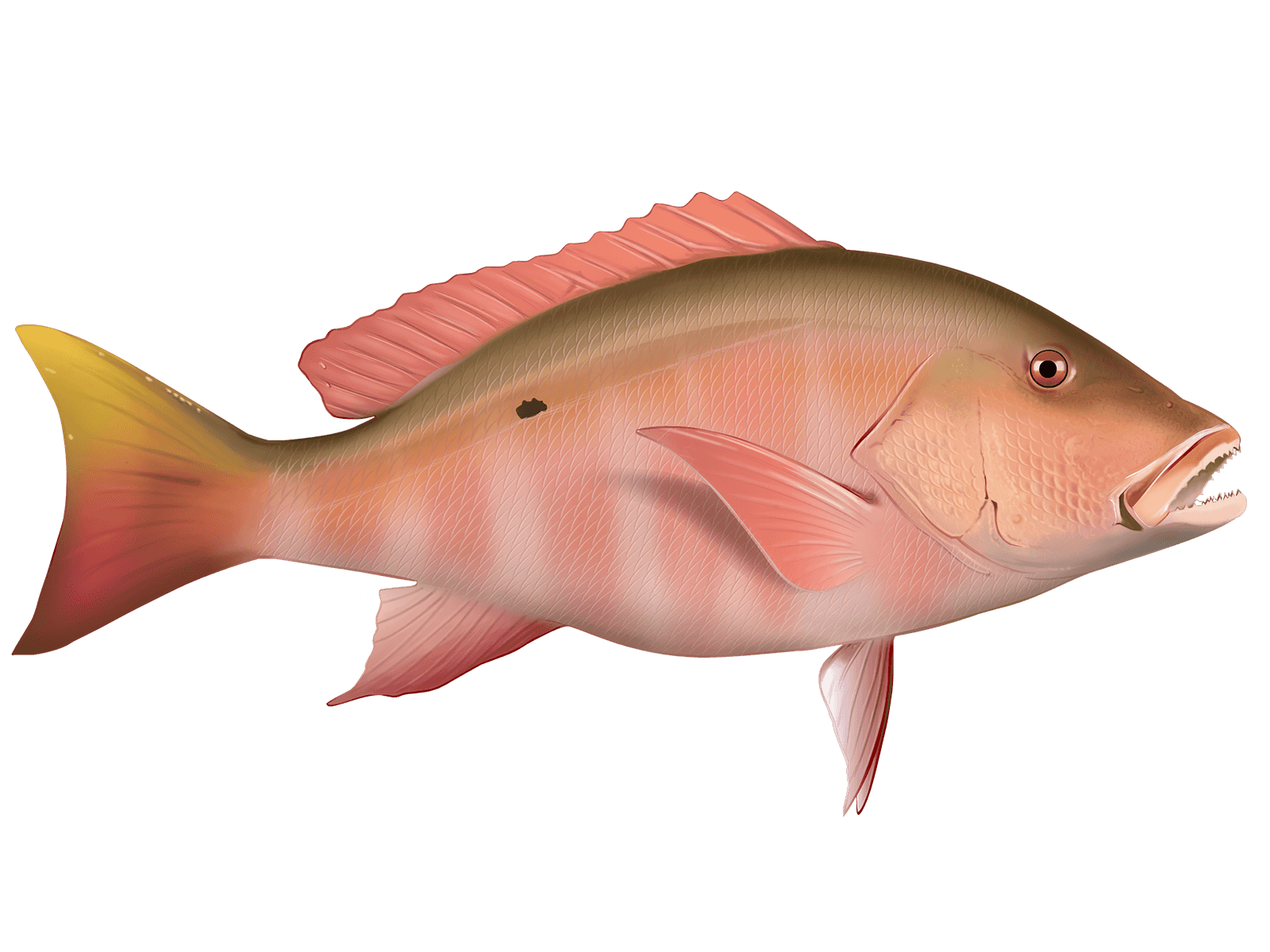Mutton Snapper

Species Details
Lutjanus Analis
Lutjanidae
Perciformes
Onshore, Reef, Nearshore, Backcountry
5 - 15 lbs.
20"
Mutton Snapper (Lutjanus analis) Fish Description
Mutton snappers have an olive color that progresses from a dark to light tone from top to bottom. Its distinguishing features are the blue lines below and behind their eyes with the presence of a small black spot on both sides. The anal fin and dorsal fin’s rear edge are pointed, while the tail fin is rounded. This type of fish can most often be confused with the lane snapper. The tips to distinguish mutton snappers from lane snappers are the small blue streaks on the face and the anal and dorsal fins pointedness.
Mutton Snapper Diet
The diet of the mutton snapper changes throughout its lifespan. As larvae, the mutton snapper feeds on plankton near the surface of the water. As it matures and grows, it moves onto the shallow grass beds and takes in larger plankton to small animals. Once the mutton snapper is an adult, it will consume fish, shrimp, crabs, octopus, squid, and snails. It has no specific time for feeding, as it nourishes itself both day and night picking food items throughout the entire day.
Mutton Snapper Size
Adult mutton snappers can become quite a large fish, that can reach up to the length of 37 inches, however, most don’t go beyond 20 inches. The weight best recognized and recorded for this species is 34 pounds.
Interesting Facts About the Mutton Snapper
- Mutton snappers are an extremely prized fish, especially game fish by saltwater anglers. Nice fighters, as they are often called, relative to the different snappers, so they are more durable to land on a lighter deal.
- The mutton snapper is recognized more for its love for swimming in sandy areas. If the snapper stays within the more sandy areas, their colors will change from their pinkish color to a more greyish tone on their bodies.
- Mutton snappers, particularly adult muttons, are usually solitary so they are most often seen in smaller groups.
Mutton Snapper - Fishing Techniques
Mutton snappers are easy to catch, but some skill is still required. And that the presentation of the bait is of great importance! Only use the freshest bait and a light sinker to keep it still down there. The rough state of the water and slow bobbing movements will be necessary to compensate for the movements of the waters. A knocker rig or a jig to let the bait float in the current is also a good alternative to try.
When fishing for mutton snappers in shallow waters, a good tip would be to let the bait drift in the chum slick on weight or a very low weight on a knocker rig, because those mutton snappers would love this! And chumming is also very good to get them to the surface, where you can try for flies or jigs.
Once the mutton realizes it has been fooled, it will try and run along the ocean floor or get back into the structure. The best confidence booster to know when you’ve caught a mutton snapper is the moment you’re looking down and through the clear blue water and see pink. When that tinge of pink grows bigger as it nears the surface, that is when you need to bring it in and then lead the fish smoothly into your fish box.
Mutton Snapper Habitat & Distribution
They are particularly widespread within the Caribbean, inhabiting reef environments. The mutton snapper is a common snapper species from Florida to South America. Occasionally, it can reach as far north as Massachusetts and south as southeastern Brazil, though these are rare occurrences. Mutton snappers can often be discovered from depths going from 82 to 295 ft, but most frequently in between 130 to 230 ft.
Muttons can be found inshore near reefs and along mangroves. Often, they are prevalent along inlets, where there is a good amount of tidal flow. But the fish can also be found along nearshore reef areas, where they tend to congregate just outside of extreme rock/reef formations in the sand.
The adult mutton snappers tend to be more present in areas with rock or coral, whereas the younger adolescent fish happen to be in sandy habitats with weed progressive in the area.







